The Sea & The Gold Drop Roads.
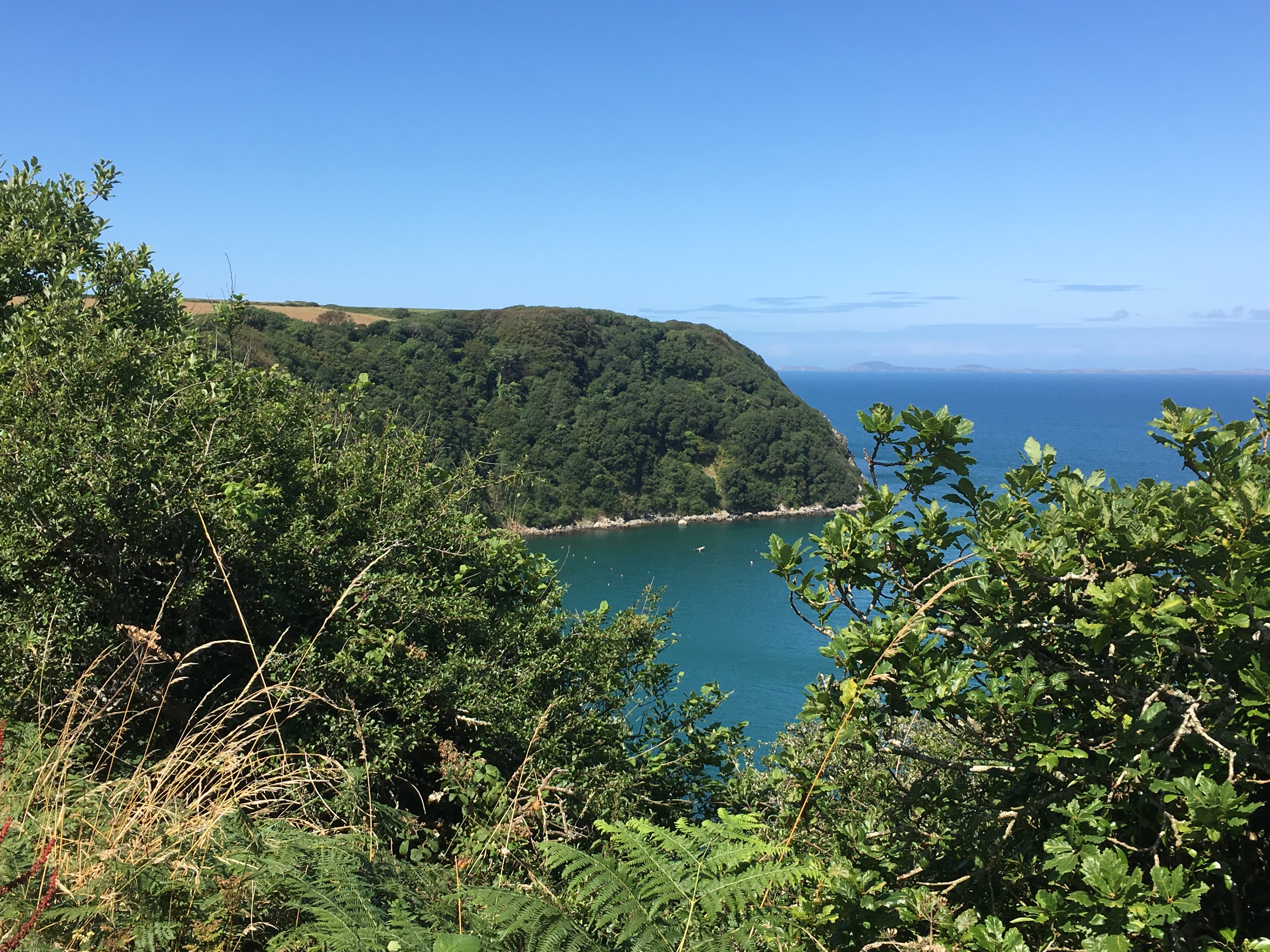
All week, the Pembrokeshire Coastal Path had taken us right, or further North; down to the Havens and the beaches. But after a careful night walk across the clifftops, our curiosity had been piqued by a small boat, lit and anchored under the steep, wooded cliffs of the mysteriously named Goultrop Roads, and a lamp that swung through the trees.
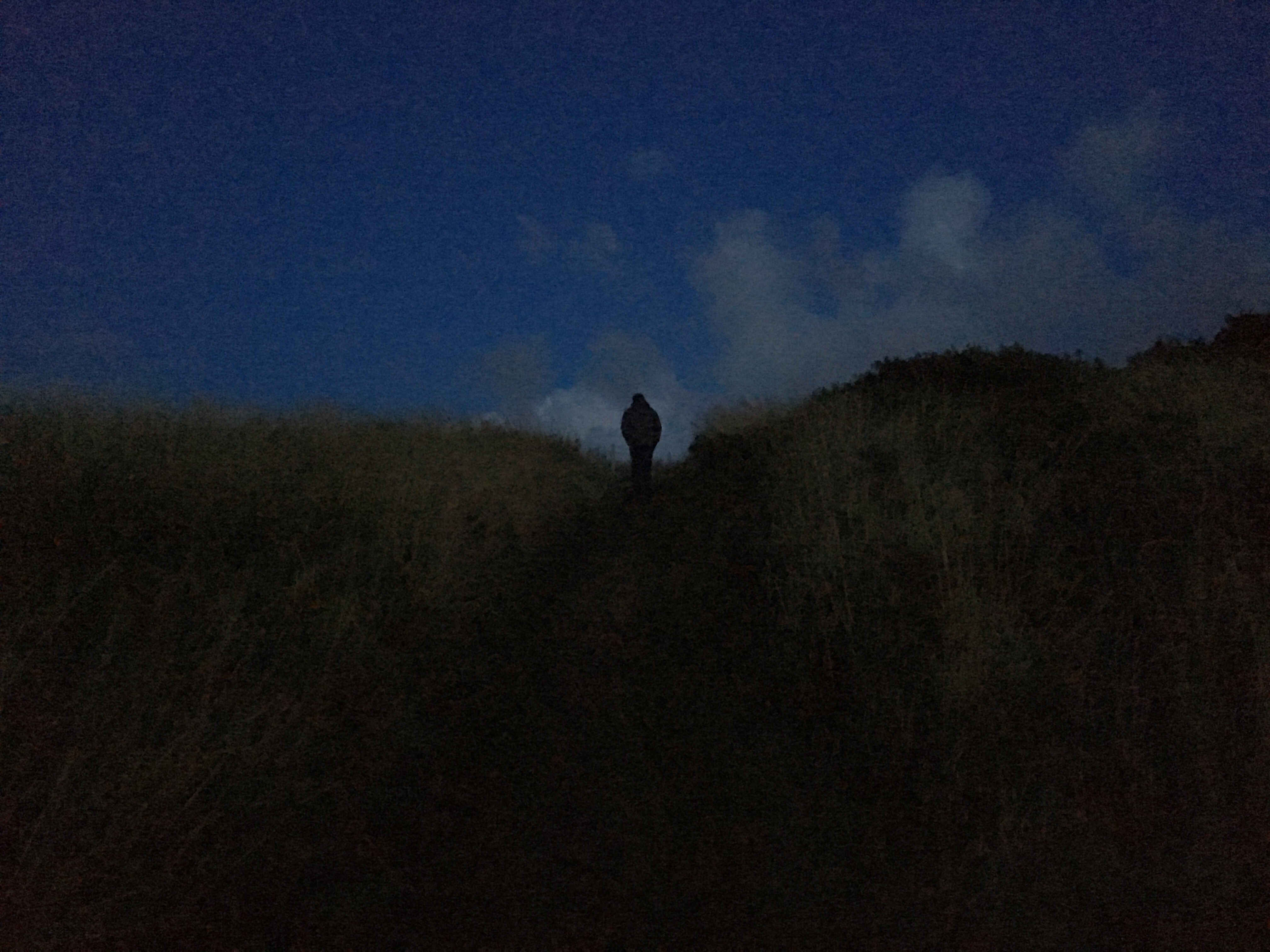
With the sea, calm, turquoise and teal below us and so clear we could see the waving fronds of seaweed, we turned south and soon reached the coastal hanging wood, treacherously steep and vanishingly rare, of the Goultrop Roads. The name is evocative enough. The children misheard it as Ghoul’s Stop, and I, as Gold Drop. There are no roads – and there is no beach.
The coast path runs right along the edge, at tree top height. And the china blue sea can be seen between the branches, below, in a strange reversion; as if it were the sky reflected. As if you were upside down. There are stunted, wiggly, ferny-sprouting oaks, hazel and sycamore, pines, hornbeam, beech and hawthorn, all lashed up together with flowering, scented honeysuckle vines.
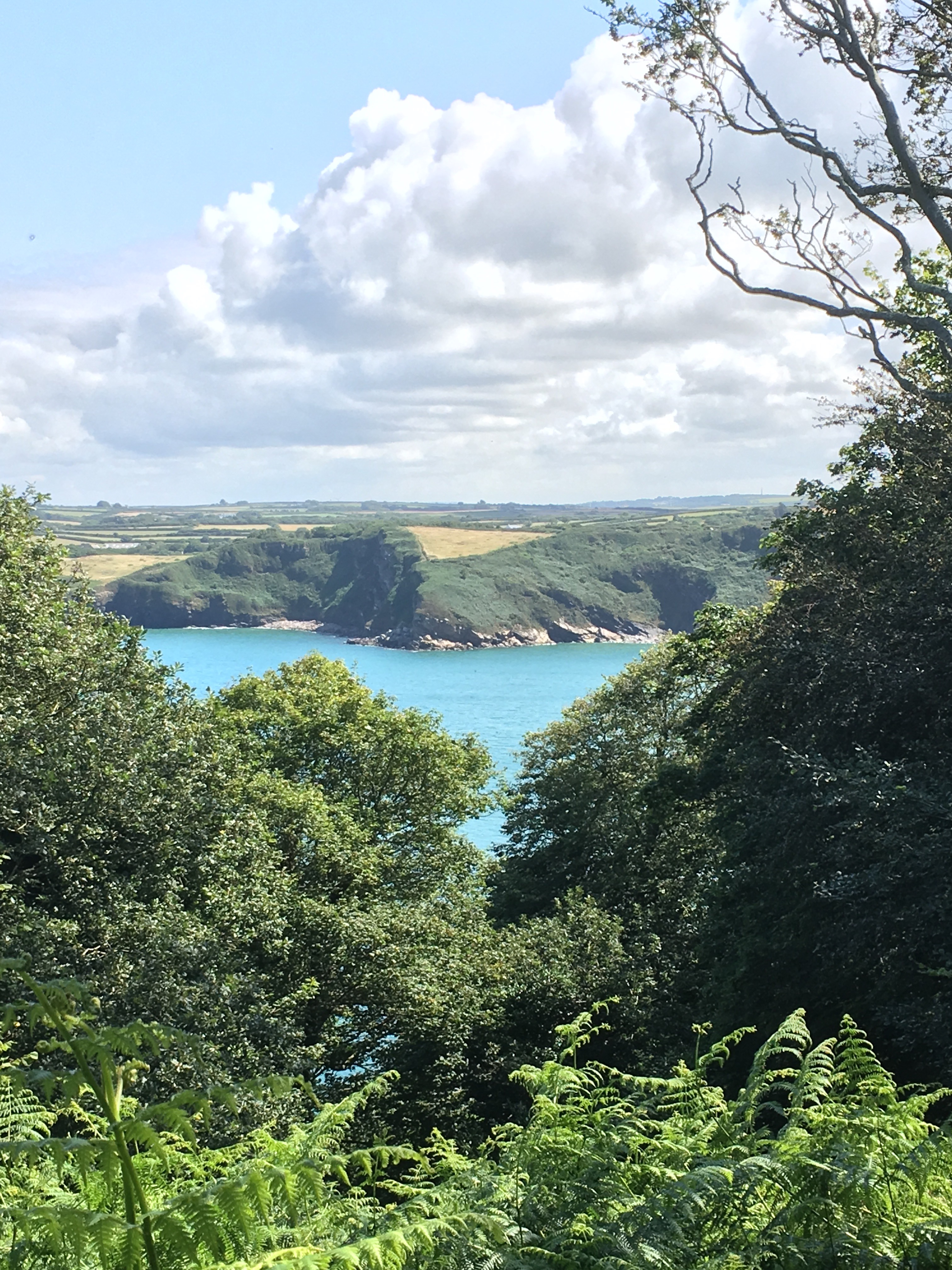
You could step straight out into the upraised arms of an oak, and climb all the way down to the sea, walking a final oak-bough-plank out – to dive straight into the sea like a pearl fisher. The only path down is now cut off by a landslip – but there may have been several tracks hidden under the canopy, where a lamp could be seen and then not – explained away, dismissed as nothing more than imagination. The ‘roads’ were old smuggler’s tracks; routes up from a safe, secret anchorage of a boat tucked in tightly at the bottom. Nearby inlets and coves are named testaments: Brandy Bay, Dutch Gin, Foxes Holes.
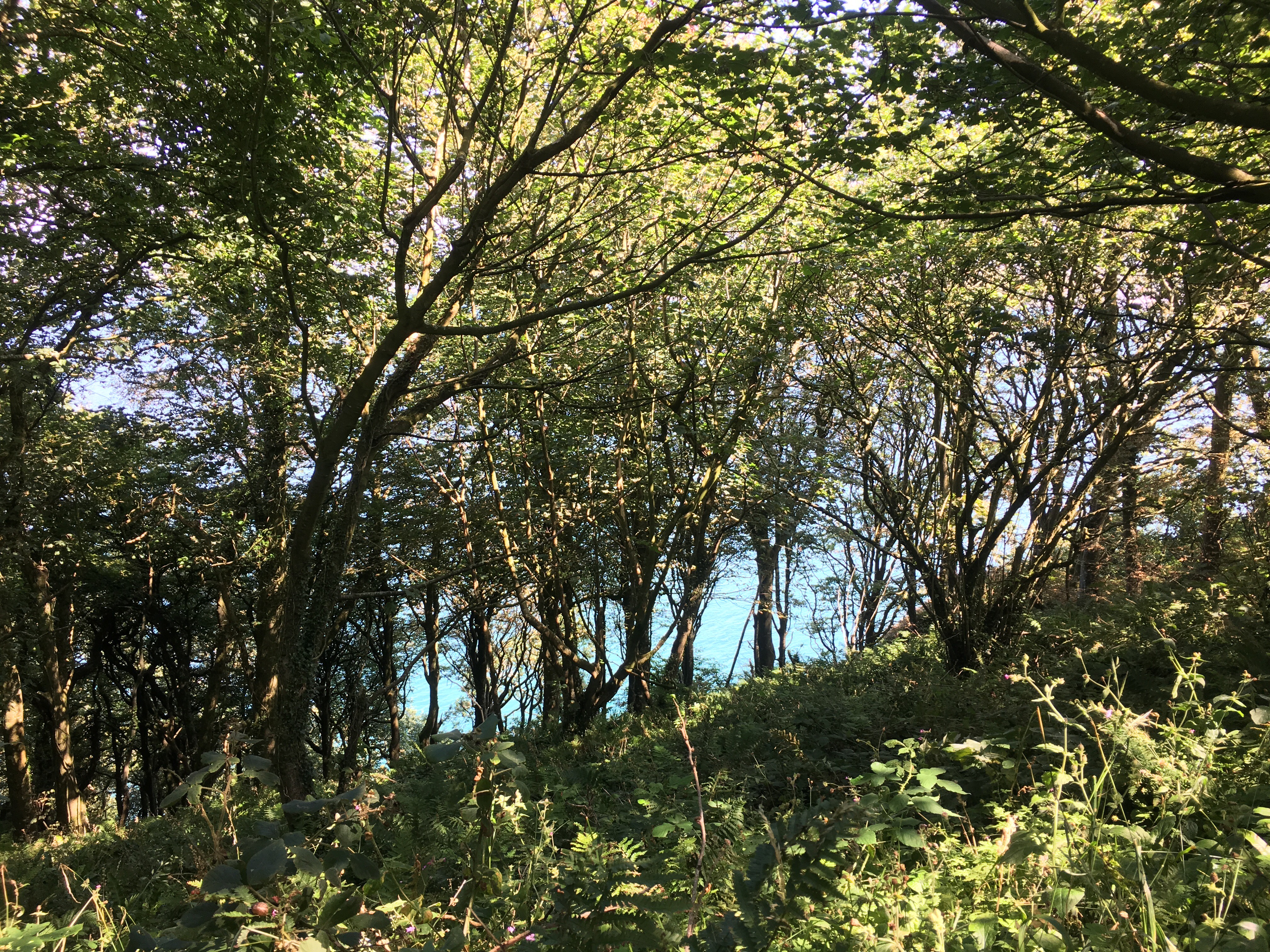
Now, there are bright butterflies, uncommon blues like sea flakes that join the gatekeepers, the travelling painted ladies and the wall browns, marked like the leaded lights of a coastal church’s stained glass windows. There are vertiginous badger tracks, a peregrine, rumours of otters and an aura of mystery even in the bright day.
Above the coast path, the small medieval church of St Mary’s lies low in a barley field full of salted, rustling corn. Its short bellcote and lone 14th Century bell, squat furtively, as if the church were not meant to be seen from the sea, or by anyone that didn’t already know it was there. Within, is a poignant WWII memorial to the Czech and Polish airman who died flying missions from the airfield of cornfields that now surround it.
Later that afternoon, we head out to the Marloes Peninsula and Wooltack Rock, with its close views of Skomer and Skokholm across the flurry of the Jack Sound. Through my binoculars, hundreds of shearwaters do just that; skimming the troughs and swell of the waves with breathtaking ease. Gannets dive off Pitting Gales Point and there is the higher-pitched jackdaw ‘chack’ of choughs. We spot four of them, flame bills and feet and a jet glossiness making vertical dives down the cliff face.

And then, if this wasn’t wild Welsh alchemy enough, the singing of seals reaches our ears, echoing up from the cove and sea caves. Three seals float upright, human-like, yawning like bored sirens; their whole dark-dappled bodies, bobbing like bottles, visible through the clear water.
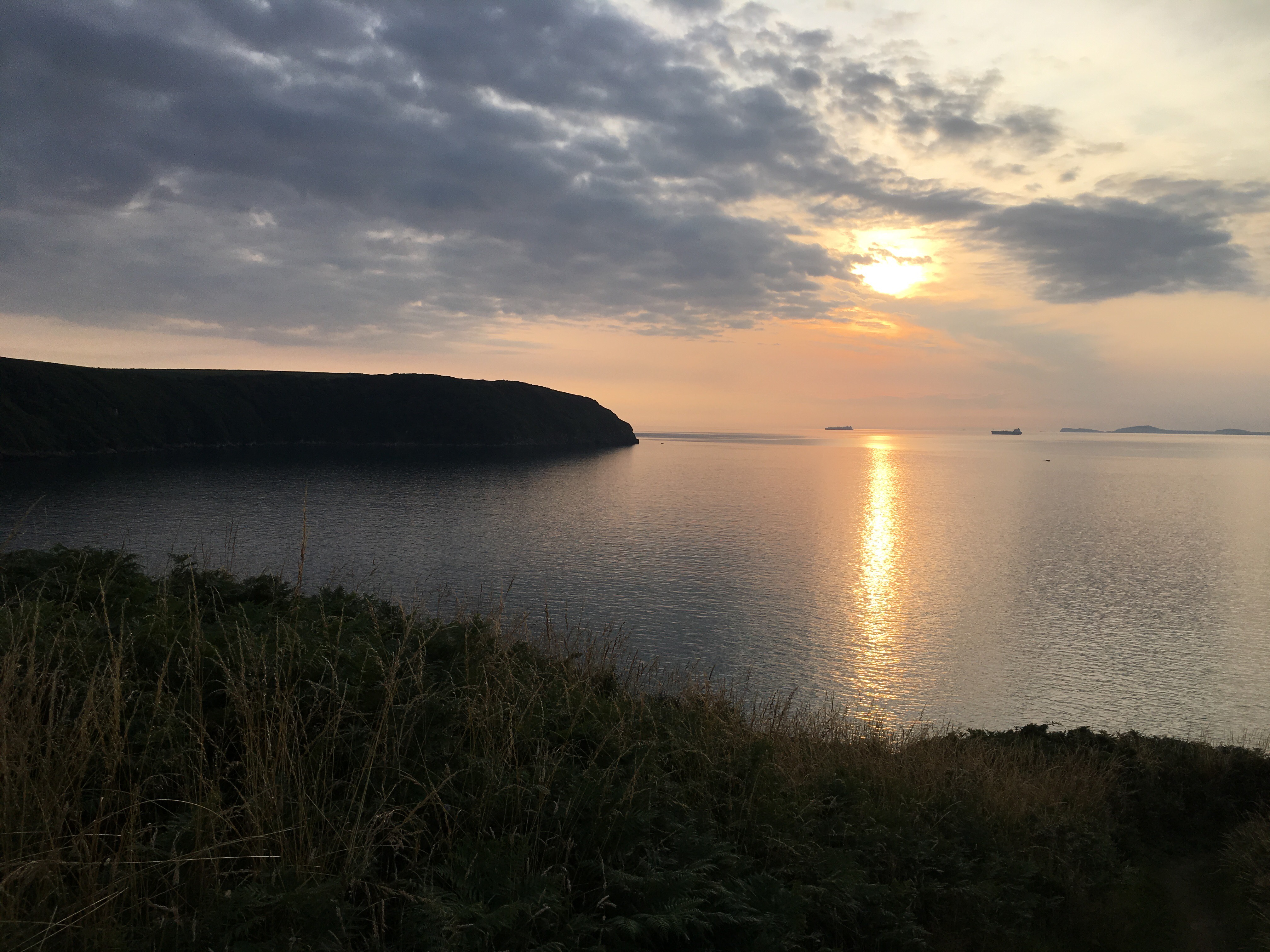
Back at our temporary home, we head out for a last evening swim, all braving the water, with the last of summer’s warmth in it. We swim towards the dark hulk of the Goultrop Roads and a light, perhaps, blinks. I know then that we passed through too quickly. I can still feel the dappled shade on my skin.
Leave a comment